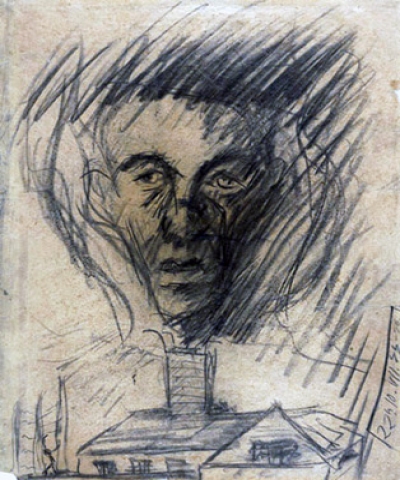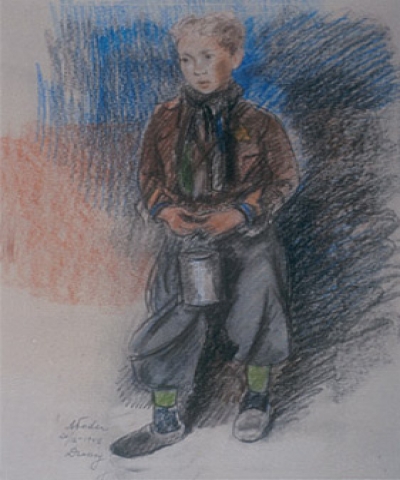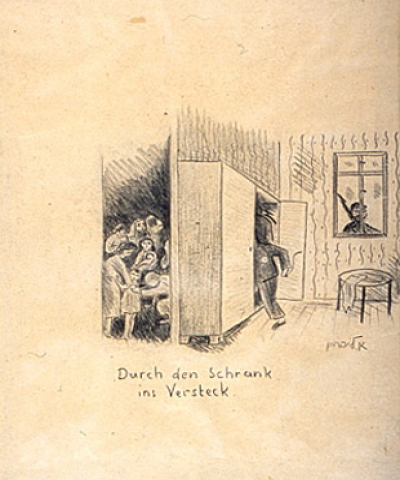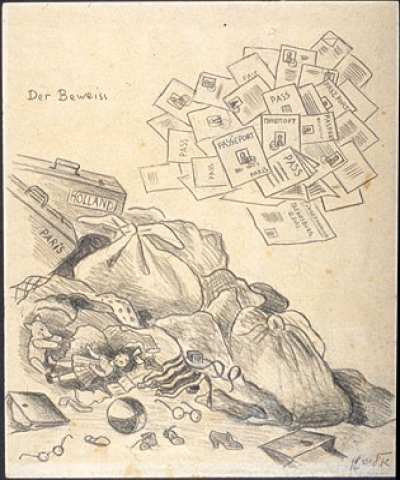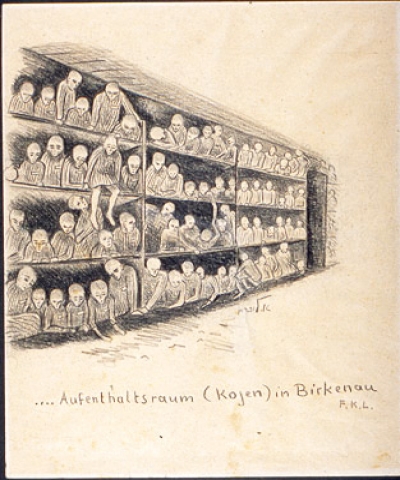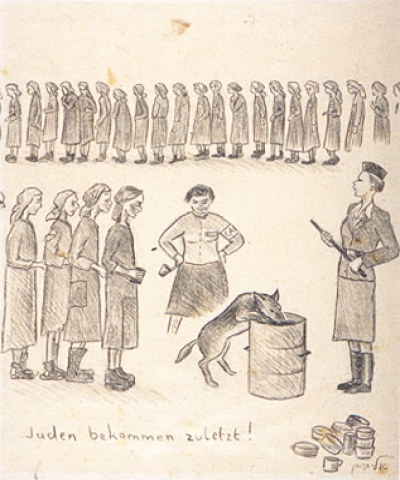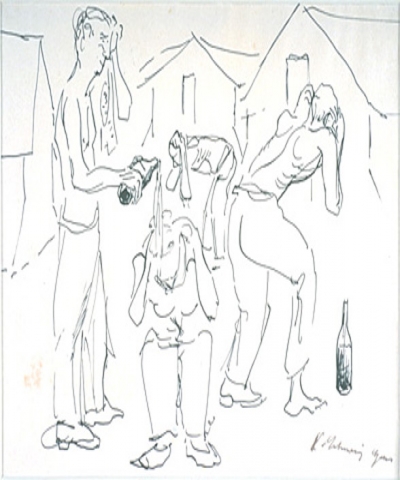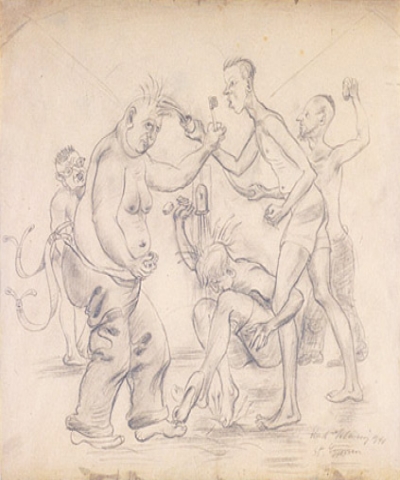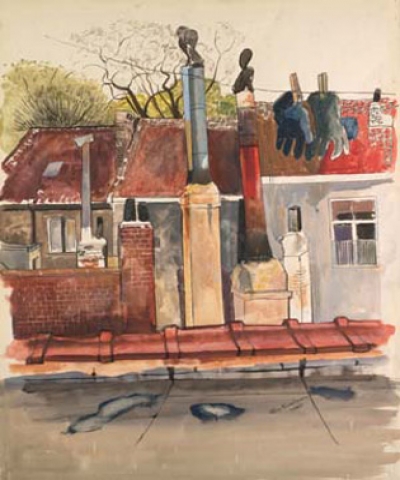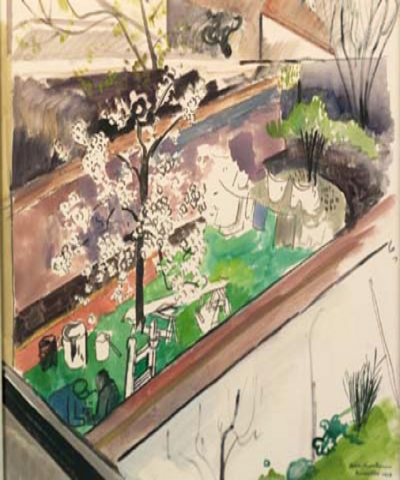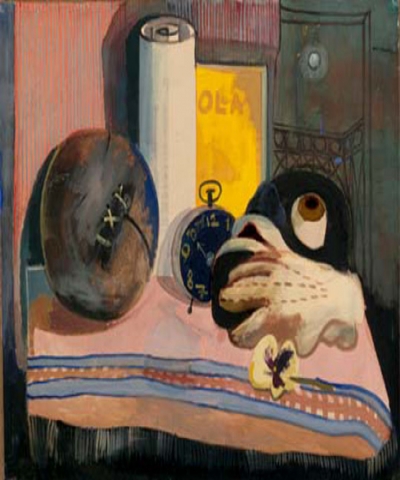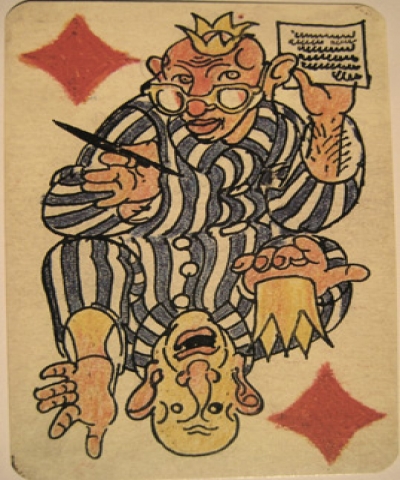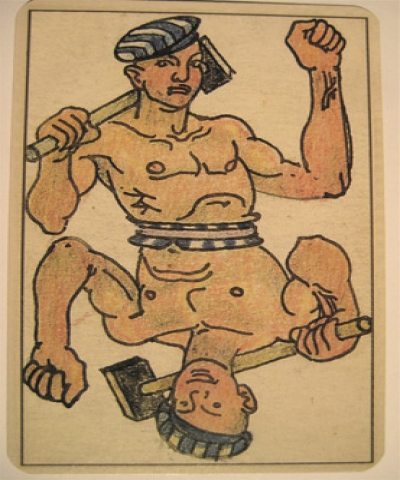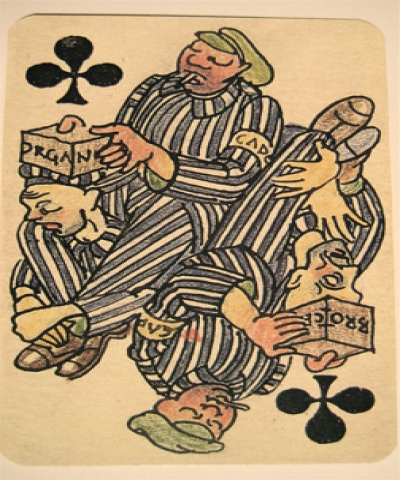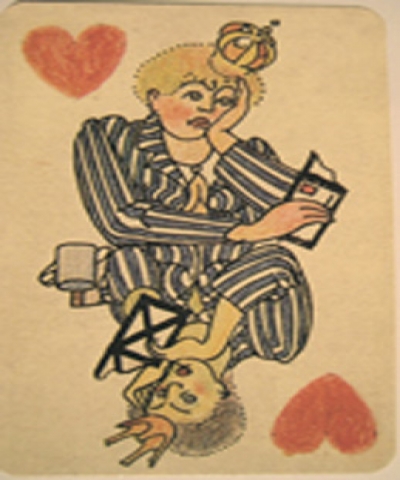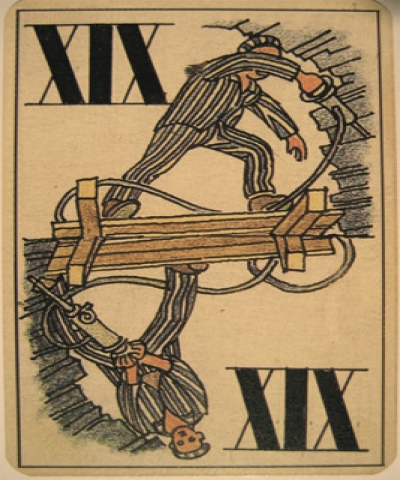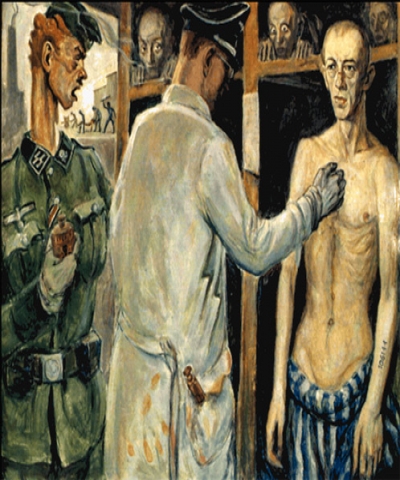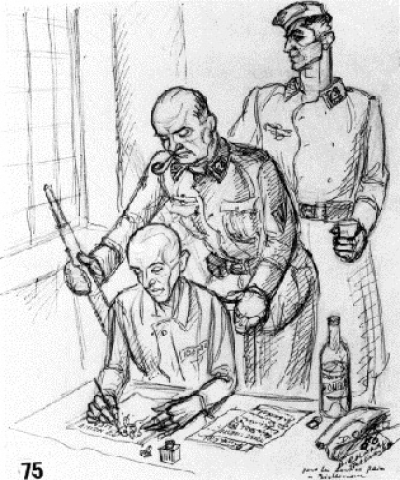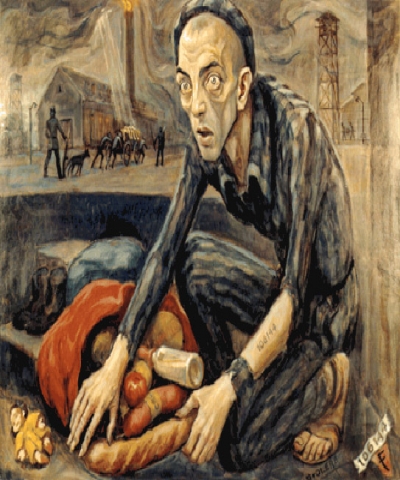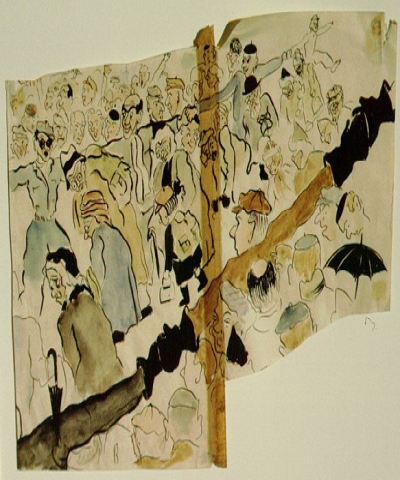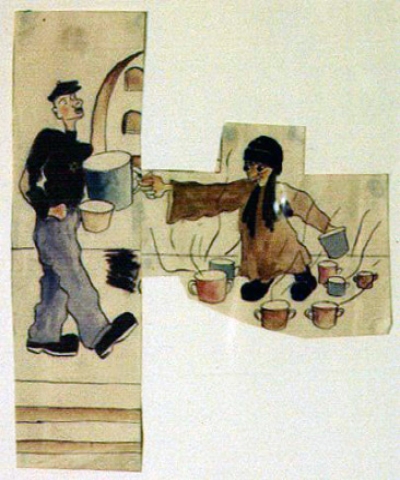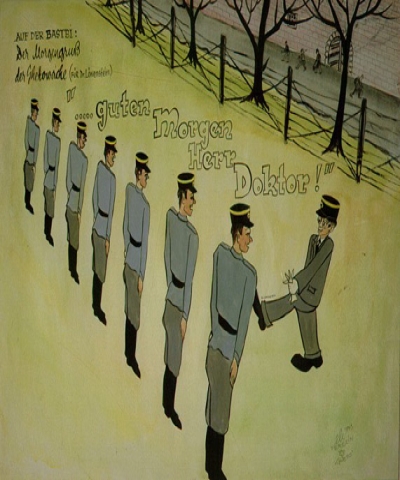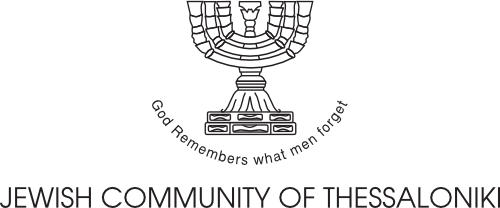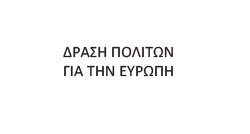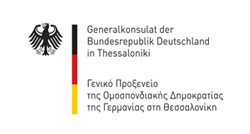“Art as a witness account„
Introduction
The study of World War II, nowadays, does not only include the causes of the war, the battles or the heroics, but also the victims. And the Jews of Europe were certainly victims and, for that matter, unusual victims; systematically persecuted not for something they did, but for who they were. For decades, especially immediately after the war, the issue of the extermination of Jews and the exploitation and looting of their property was covered under a veil of silence or characterized by attempts of repression from the collective memory.
The reconstruction of memory, and consequently the debate on the Holocaust trauma, is a relatively modern phenomenon. Only as late as 2004 was January 27th declared the official day of Holocaust Remembrance. Furthermore, public political statements about the Holocaust contributed significantly to the resurfacing of events that had been repressed. An example of this is the first remembrance walk organised in March 2013 for the victims of Thessaloniki (on the occasion of the departure date of the first train directed to Auschwitz-Birkenau in March '43).
But there is also another reason that renders the presence of Jews in the content of a website for the Second World War indispensable. A recent research conducted by the University of Macedonia showed that the conditions of economic and political crisis in Greece have rekindled anti-Semitic myths and reinforced pre-existing stereotypes. Furthermore, the minimal social trust cultivated in people, contributes in the increase of anti-Semitism, especially among the young.
For all these reasons it is necessary to tell the history of Jews in Greece. Recognising the gaps in the historical knowledge of young people, we devised, on the Greek version of the site, two "lesson plans". The first relates to the social life of Jews before 1940 and maps the Jewish communities throughout Greece - without being exhaustive. We also offer a panorama of their professional and social relations before the war, in an effort to deconstruct the stereotypical myth: "Jew equals rich". This lesson plan is not available in the English or German translation.
The second lesson plan covers the period 1940-1945. This section is set out in detail below, not as a lesson plan but as informative material. With the help of fine arts, website visitors learn about the bleakest part of the war, the Holocaust. The choice of artworks as witness accounts was not accidental. The paintings selected were made by prisoners in concentration camps who recorded their experiences not through realistic representation, but through their personal experience of pain and trauma, which carries universal significance.
Main Body
This section examines the wider contribution of art in the depiction of important historical events. In this case, the historical event is the Holocaust, but, in the future, other historical events may be studied through art, with particular emphasis on the personal experience of the artist. The artists who created the works used here were people who lived through the horrible experience of the camps. Not all of them were Jews, nor were they all confined in the same camps. They all, however, expressed their experiences with great intensity that does not induce terror and revulsion, as is the case with the notorious audio-visual material from the extermination camps -i.e. skeletal-looking bodies and piles of corpses.
On the contrary, the artistic representation of the testimonies triggers the viewers’ feelings of compassion for the suffering of fellow human beings and cultivates awareness of the inhumanity and brutality of war. Finally, it proves that art is not a luxury reserved for the wealthy, but a need emanating from life, for the sake of life.
Games
Two activities are designed for the Holocaust, targeted in different directions. The aim of the first game, "the witness game", is for players to conquer historical knowledge, knowledge about the world and its past through discovering techniques. With the help of thematic categories, the main axis of new knowledge is presented, namely the fate of the Jews of Europe in the period 1940-1945.
The second game, "the Dora game" is a role playing one, based on a game played by Le Lionnais in the Dora labour camp. This is a game that helped two destitute inmates maintain their human nature when everything that was happening around them (starvation, misery, death) threatened to dehumanize them. This game introduces players to painting, and highlights the sense of freedom, creativity and optimism that art cultivates.
After both games have been played, further activities can be added, for example the players can create their own collage of paintings and texts to present another historical event through art, for example the Greek-Italian war.
In the “witness game” players are divided into groups of 2-4 people. Aim: to jointly study the Holocaust. The paintings presented should obtain personal meaning for the players. The six major categories of classification contribute to this end. The categories are specific and their titles aim to "unlock" the meaning of the depictions (in our case witness accounts).
The six categories are:
- Life in hiding
- Life in concentration camps
- Life in extermination camps
- Children
- Nazi
- Kapo
This selection covers a wide range of topics that are dominant in the paintings of victims and offers the motivation for further study. Before the game starts, players should be aware that:
- A painting can be classified in more than one categories.
- The evaluation of the teams will be based not only on successful classification but also on time.
You can find the detailed rules of the game here.
This game brings players in contact with works of art, enriching their artistic experiences and cultivating empathy. Through the multiple classification categories participants better understand that every fact can have various readings. They adopt the viewpoint of the hero of a story and according to the category they place themselves in the relative role.
"The Dora game" compliments the first game. It is based on Le Lionnais’s essay. In summary, the text describes how two inmates in a Nazi labour camp used art to escape the horrible reality they lived in. One inmate would describe paintings to the other, and the latter would compose them in his mind, even though he had never actually seen them. This is the so-called "mental painting".
The game is played on a computer, but it could be played with traditional means instead, with paper and markers. Four paintings, belonging to different periods and artistic movements, were selected from Le Lionnais’s essay. After their individual characteristics -faces, bodies, objects- were split apart, they were classified into categories. The aim of the game is for players to reconstruct the paintings, not in their minds, but on the computer screen - or on paper. Adding further rules to the game, for example time or word restrictions, we can create various levels of difficulty. You can find further instructions by clicking here
Le Lionnais
Francois Le Lionnais was a French Jew, a rebel, a scientist and an art lover. He was imprisoned in the Mittelbau-Dora concentration camp in central Germany, near the mountain Kohnstein, in Thuringia. A large part of that concentration camp was built underground, in order to protect artillery from the bombings of the Allies and to allow for the building of missile components. It is believed that around 60.000 war prisoners were held there, under conditions of extreme starvation and violence. After the end of the war and his release from the concentration camp, Le Lionnais wrote the essay “La Peinture à Dora” where he describes how he used narrations and descriptions of works of art so that he and his friends could find courage and maintain hope during their imprisonment. This essay was translated and offered, generously, to us by the philologist Eleni Kosma. It consists of a narration of the triumph of free thought, of “mental creation”, over Nazi perversion; a narration of the strength art provides when reality becomes unbearable.



